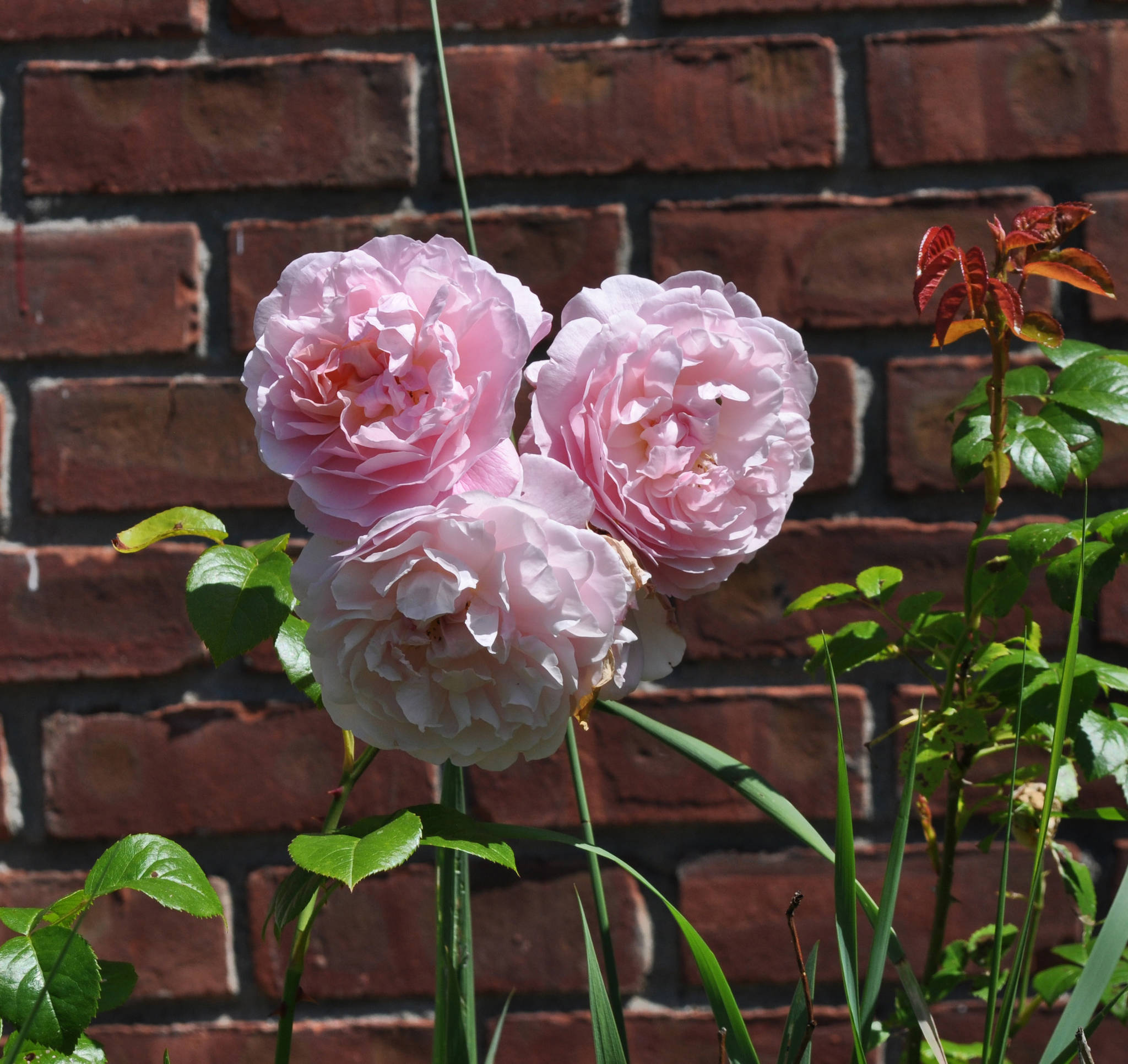Seeing gardens awash in rose blossoms this time of year is undoubtedly what prompted my sister-in-law to call me for suggestions on what roses to plant.
We’ll see if she can sustain her enthusiasm until early fall or spring, either of which would be better times for planting.
Not that you couldn’t plant roses now — if they were purchased growing in pots and were diligently watered (1 gallon of water per plant, first on a daily schedule and then tapering off to a weekly schedule).
As for what type of roses to plant, that’s a matter of taste. I cautioned her to consider, above all else, disease resistance, which varies considerably among classes and varieties of roses. After all, why plant something that you know is going to be sick unless you douse it with pesticides?
Hybrid tea roses have pest problems
Fortunately for me, my least favorite roses, hybrid teas, also tend to be those most susceptible to disease. I happen not to like those pointed buds and large, high-centered blossoms in traffic-stopping colors alone atop long stalks. They’re OK for cutting, but not in the garden.
Still, if someone likes hybrid tea roses — and they are the ones most commonly planted — some, such as Friendship, Paradise, Secret and Sheer Elegance, do resist disease.
For that hybrid tea shape on a more landscape-worthy plant, grandiflora or floribunda roses are the ones to grow. Both bear their blossoms in clusters, with grandifloras having fewer but larger blossoms than floribundas. Some of the better grandifloras are Gold Medal, Prima Donna, and the original, making its debut in 1954, Queen Elizabeth.
Floribundas include Chinatown, Escape, Dainty Maid and many more. Grandifloras and especially floribundas are generally more cold-hardy and disease-resistant than hybrid teas.
Antiques and species roses
Shrub roses are an ill-defined group that can include antique roses, species roses and even some fine new hybrids. What they all have in common is that they are full-bodied bushes — not necessarily large, but lush with leaves and blossoms.
Antique roses are those cultivated before 1867, when the first hybrid tea rose, La France, entered the scene. Antique roses are grouped into families with names evocative of romantic, old gardens: Gallica, Damask, Alba, Centifolia and Moss. Variety names such as Belle Isis, Gloire de France, Maiden’s Blush and Belle Amour complete the image.
Antique roses have a blowsy, casual air about them. These are roses that aren’t offended by offering support for clematis vines, or by having delphinium spires poke up through their branches. The blossoms have distinctive fragrances and pastel petals crumpled atop stems like crepe paper in a teacup. Many antique roses are cold-hardy and disease-resistant. One of my favorites is a Damask rose named Rosa Ispahan with intensely fragrant, pink blooms.
Species roses, another kind of shrub rose, are garden-worthy wild roses that have been moved over the centuries into gardens. Cold hardiness and disease resistance reflect their wild heritage.
Blossoms of species roses usually have a single row of petals, bestowing a simple charm. Father Hugo’s rose is a species rose whose ferny foliage provides the show all season long, after the cheery, lemon-yellow blossoms have faded.
Modern shrub roses have it all
Most antique and species roses flower but once a season, which is undoubtedly one reason why their popularity was eclipsed by hybrid tea roses. (Rosa Ispahan, the antique rose, makes up for this lapse by flowering over a long period.)
Enter now modern shrub roses. Some have it all: full bodied-plants, disease resistance, and blooms with old-fashioned shapes and colors that appear all season. “Modern shrub rose” is a broad category, and includes what might be called English roses, David Austin roses, Romantica roses and more.
Blooms within each family of rose vary widely from one variety to the next. Look through books and catalogs to sort through their characteristics. Books and catalogs also will cover some kinds of roses not mentioned here, such as climbers, ramblers and miniatures.
But I don’t think those were the kinds that my sister-in-law had in mind for her garden.

